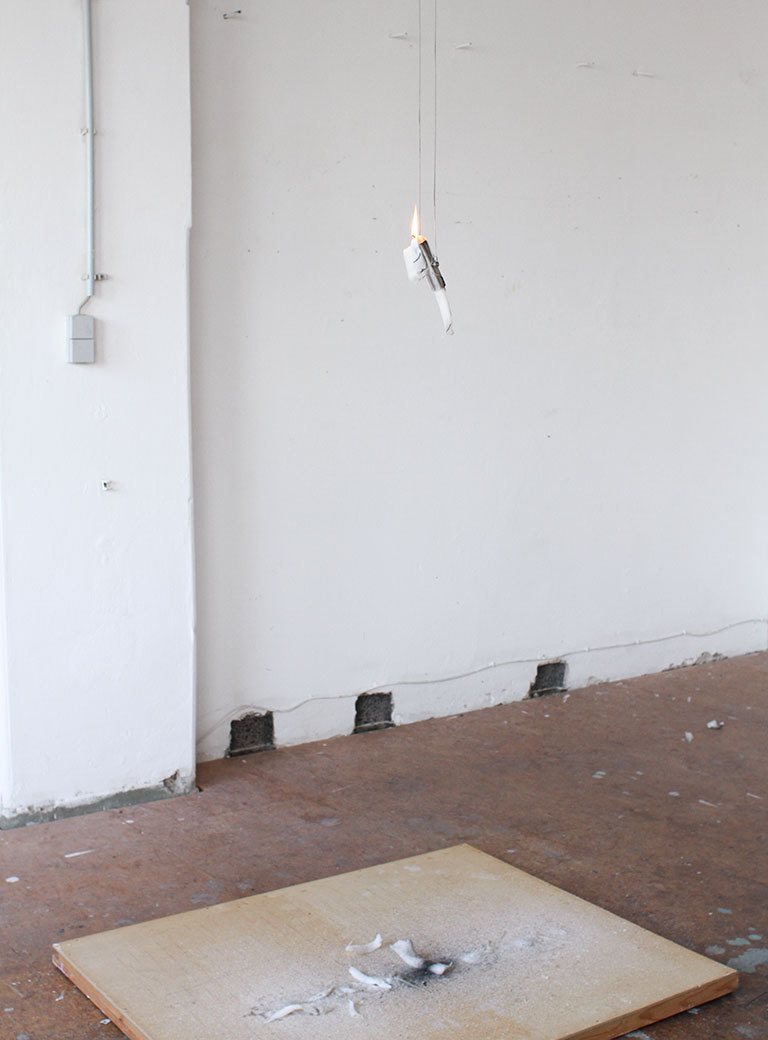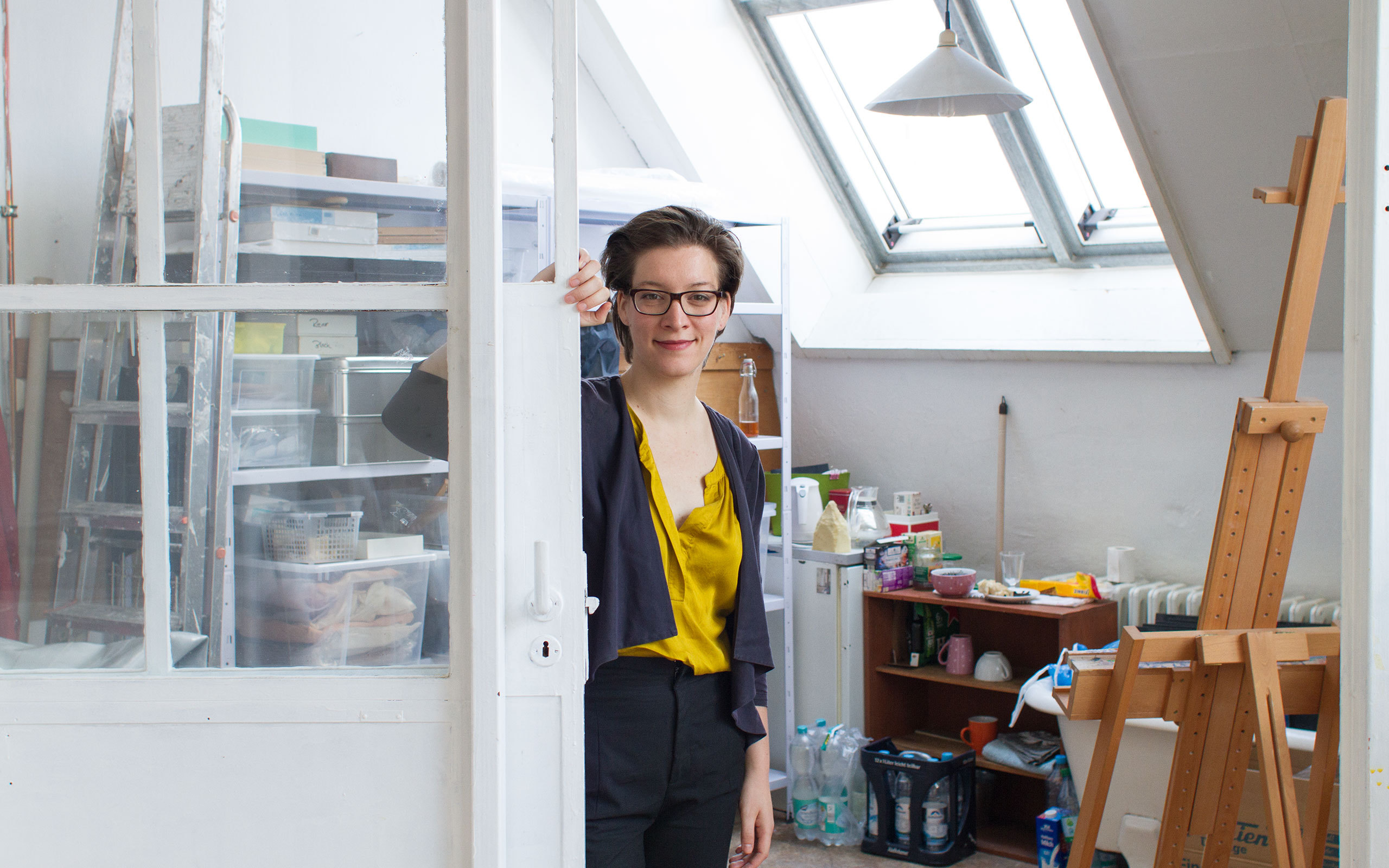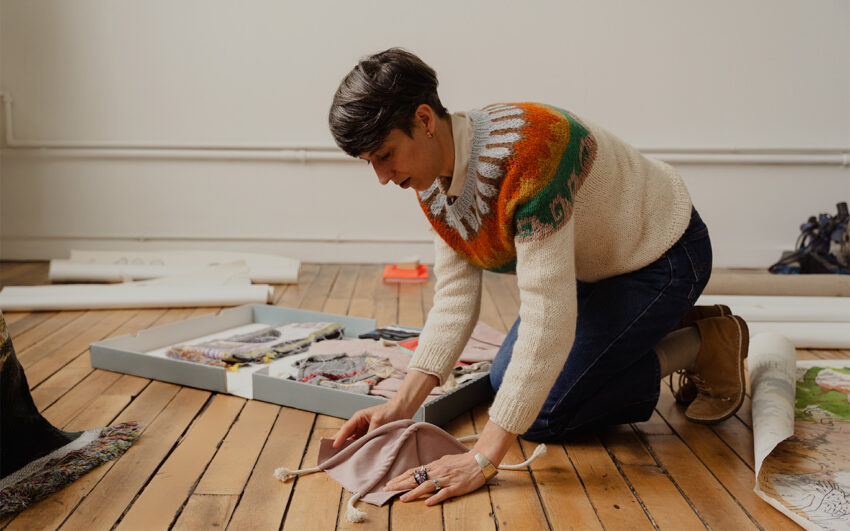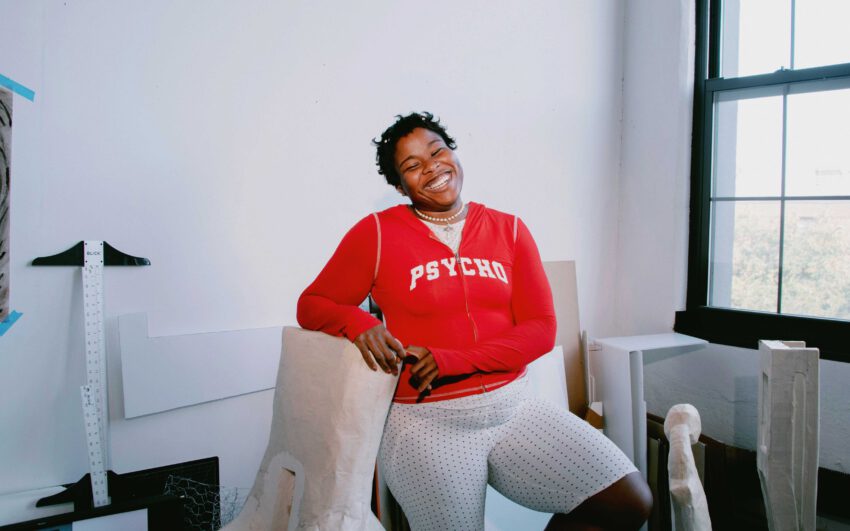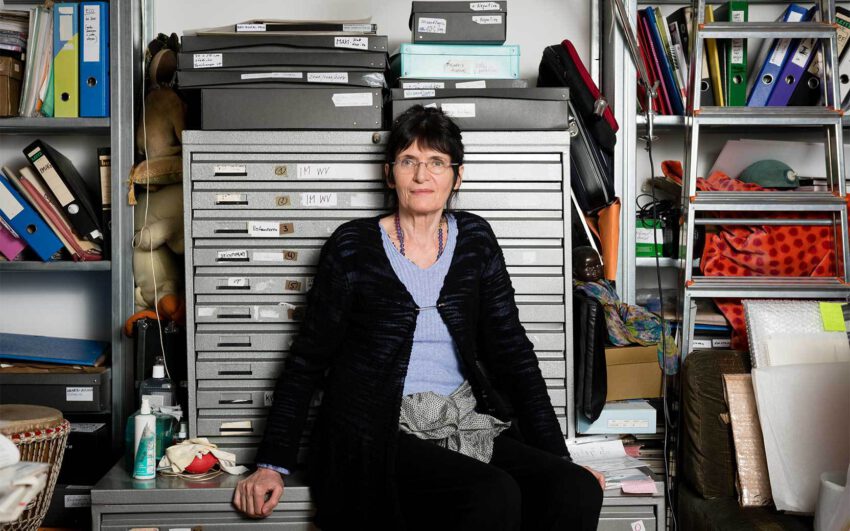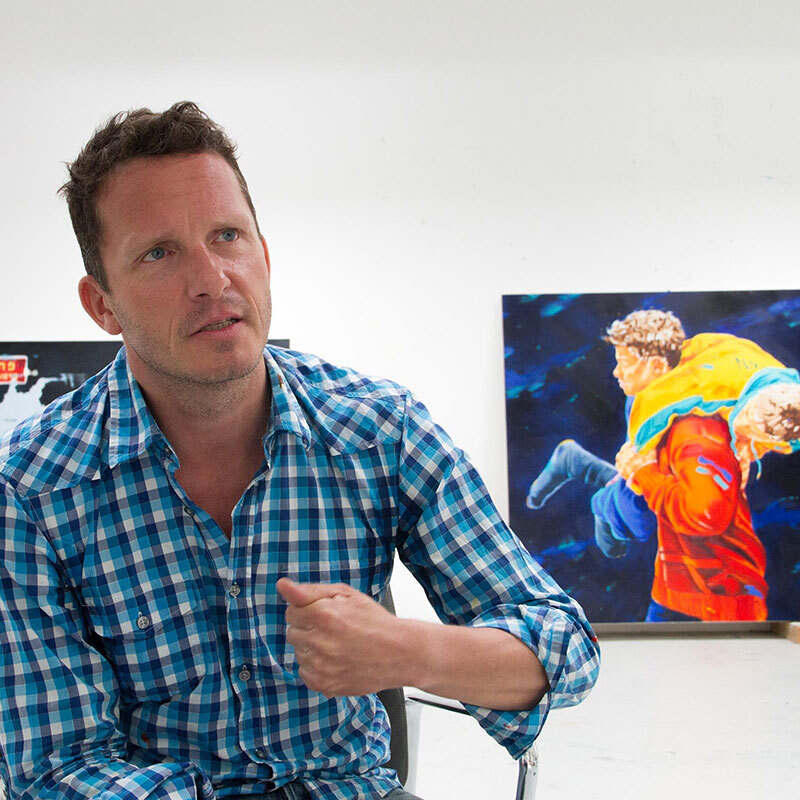Sophia Pompéry is an observer. In quiet concentration she draws poetic truths from the seemingly mundane. Her conceptual art works utilize everyday things and their underlying physics, inviting us to examine and get to know these presumed already known articles anew. In greeting us at her Berlin studio Sophia ignited a candle, suspended from the ceiling, with a wick at each end, which is known from her video Lighting Up, Burning Down. Burning from each end towards the center, the double-candle sets the duration of our conversation, similarly to an hourglass.
Sophia, you are probably one of the few artists who do not only live and work in Berlin but who were also born here. How have you experienced changes to the city?
At the time of the Wall I was still a child. Then, Berlin was an island, and actually everybody tried to leave, to Düsseldorf, Frankfurt, or Munich – mainly away from this enclave. With the reunification of Germany, Berlin was all of a sudden the new capital where one could rent centrally positioned rooms at low cost. Suddenly, the new Mitte (East) was hip. Although the buildings were in bad condition and situated directly along the wall and one had to heat with stoves, one could exist on very little money, I was in the center of the city and held parties in the basement.
Since that time many things have changed in Berlin.
Yes of course. At some point many houses were restored and the party had moved, first to Prenzlauer Berg and Kreuzberg and then to Neukölln. It is sad to see how in the last fifteen years the population in some areas has changed almost completely. Lately, more and more creative people have moved to the outskirts, to Marzahn or Mariendorf – really quite a bit out of touch. There is a great need for affordable housing and workspace. I was very lucky to have found both downtown and close to each other.
However, compared to other metropolises one can still afford life here as an artist.
That’s true. And the city does a lot for it. Medium-term planning is to build 4.000 studios of which 2.000 are apparently already completed. The city administration has realized that the artists and international community are a plus for the city. The fact that the city attracts many artists from all over the world has become very important for Berlin – especially in terms of image.
When you began your study and worked more intensively artistically, did you need long to find your direction?
Retrospectively, I don’t know whether it was good to begin studying at eighteen. I have frittered away a lot of time finding out what it was I didn’t want. In Weißensee all doors were open and one was spoiled for choice.
Is there nobody to help to find one’s orientation?
You have to find out for yourself. I believe with more life experience and having done other things before, one can utilize the possibilities better, because one can explore the content of the work without having to deal with experimenting with techniques. Antje Majewski and Karin Sander were very good professors. And the more mature the work, the more helpful is the critique. On the other hand it is also nice to begin one’s studies early and to finish early.
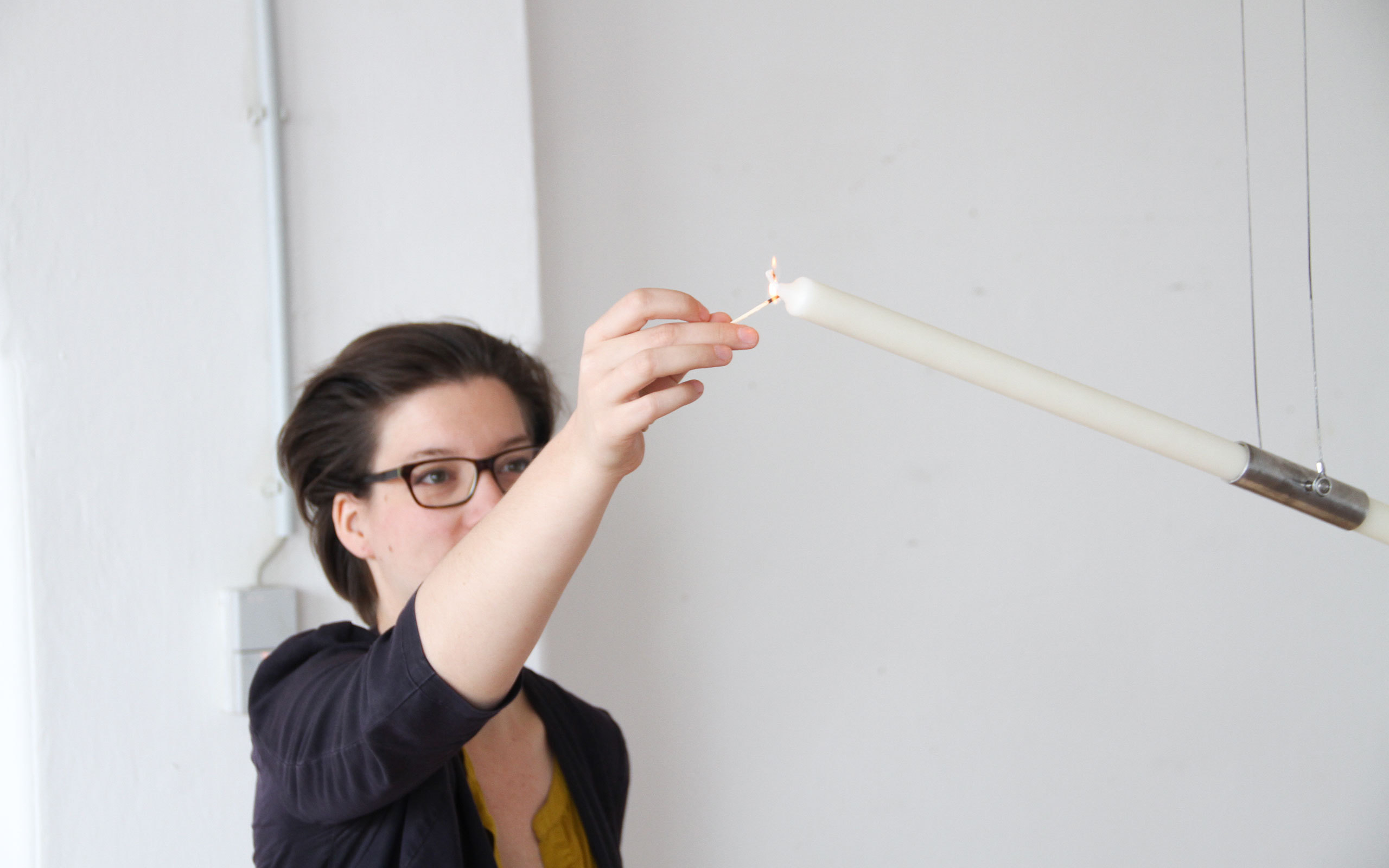
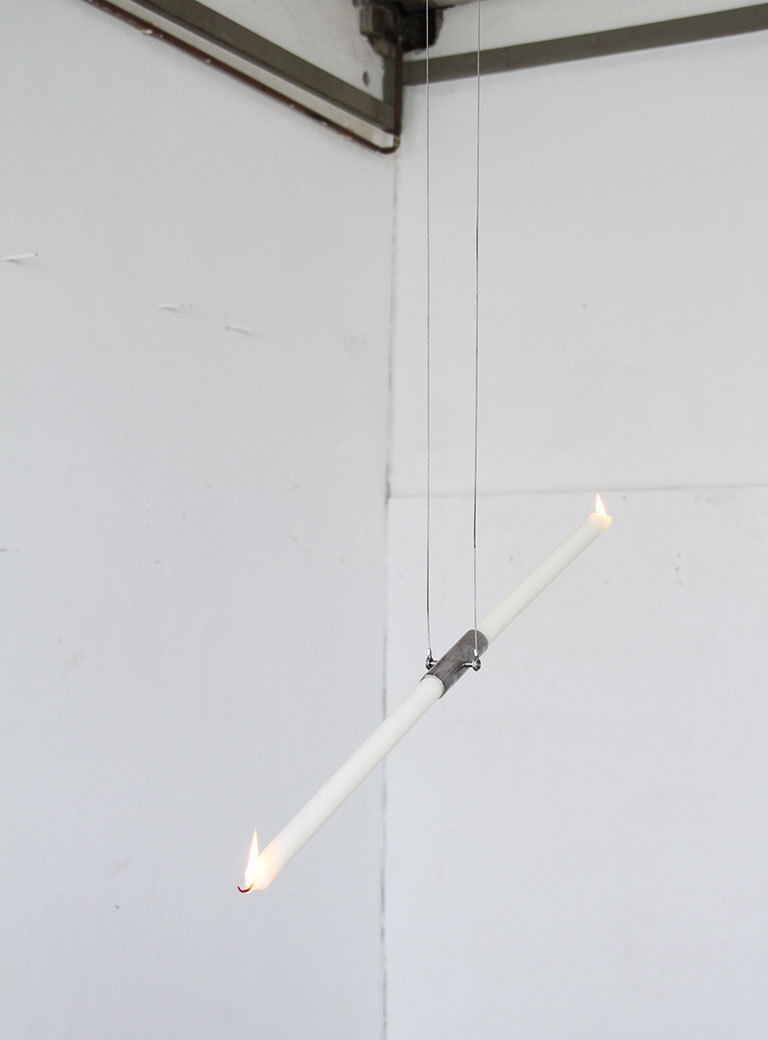
Later, at the University of the Arts, you also met Ólafur Elíasson.
Exactly. When I had completed my studies in Weißensee, Ólafur founded the Institut für Raumexperimente [Institute for Spatial Experiments] there. I applied there because I had always wished for such a teaching concept. Ólafur invited people from very different fields to speak about their personal field. It could be a chaos theoretician exploring black holes, a language scientist investigating the culturally conditioned definition of color, or a philosopher investigating maps as tools for thinking. It was always about how these people define space. A sociologist will define space quite differently than a dancer and an architect differently than a mathematician. The experiment was not only related to artistic work, but focused on the question which formats exhibitions, excursions, and work discussions could have. It was very versatile.
How did you experience entering the artistic life after your studies? Some do fall into a hole at first.
No, it wasn’t like that for me. Shortly after the completion of my studies I already had my first solo show at Gitte Weise Galerie, Berlin. Simultaneously was the opening of ARTER – space for art, a museum in Turkey the collection of which acquired my works, where they were hanging next to very big names. I was invited to a reception at the summer residence of a major collector: waiters in white, sunset over the Bosporus. That was quite a bit for the beginning. Back in Berlin I was confronted with reality again; there was a letter from the bank that my rent had not been transferred because the account was empty. Thereupon I bought paint for new works with the last of my money. By the end of the week, my galerist had sold three of the works. That was my baptism by fire.
How is it to have studied with a superstar of the art world like Ólafur Elíasson and still be at the beginning of one’s career? Does one feel under pressure?
I was more interested in the question of my own identity than the pressure that could perhaps occur as a consequence of it.
But you never leaned back.
One has a large part of one’s own success in one’s own hands. That’s one thing nobody tells you when you are a student: one actually spends very little time with one’s own work and very much more in cultivating contacts, documenting one’s work, organizing oneself and so on. That’s not always easy, but today I can say that for six years now I’ve been working exclusively freelance and am able to live off my art.
Have you felt sufficiently prepared for the conditions after your studies?
No, not enough. It is truly a luxury to be able to work in a protected space after the studies and not to be confronted with reality too early. Talent is only a fraction of success, and too few artists have the required entrepreneurial spirit and the necessary know-how in order to succeed alone. How do I speak about my work? How do I write a good application? How do I negotiate honoraries? Unfortunately, all of these things are very important. Meanwhile change is taking place at the academies. I am very happy, since this semester, together with my colleague Birgit Effinger, I am establishing a center for graduates at the Art Academy Weißensee, Berlin. The program is developed in cooperation with the academy administration and the Circle of Friends. It is tailored to the needs of the graduates and provides seminars and workshops to accompany the career, excursions and alumni evenings to build up a network. In the future, twenty supported studios will be added.
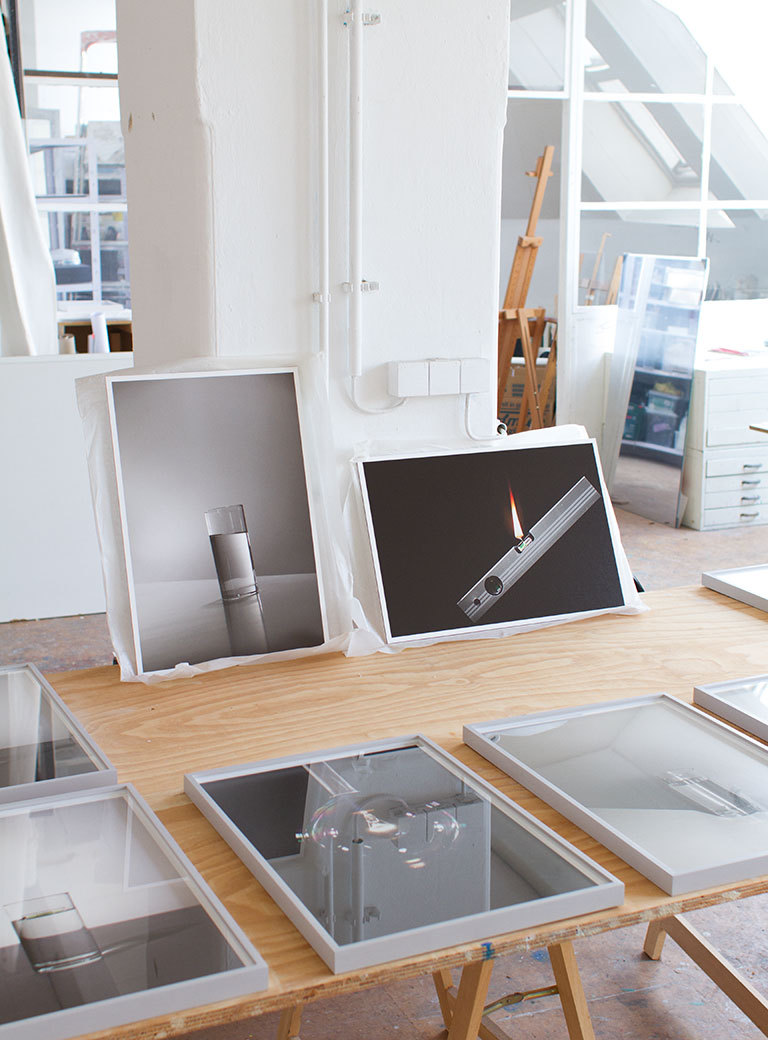
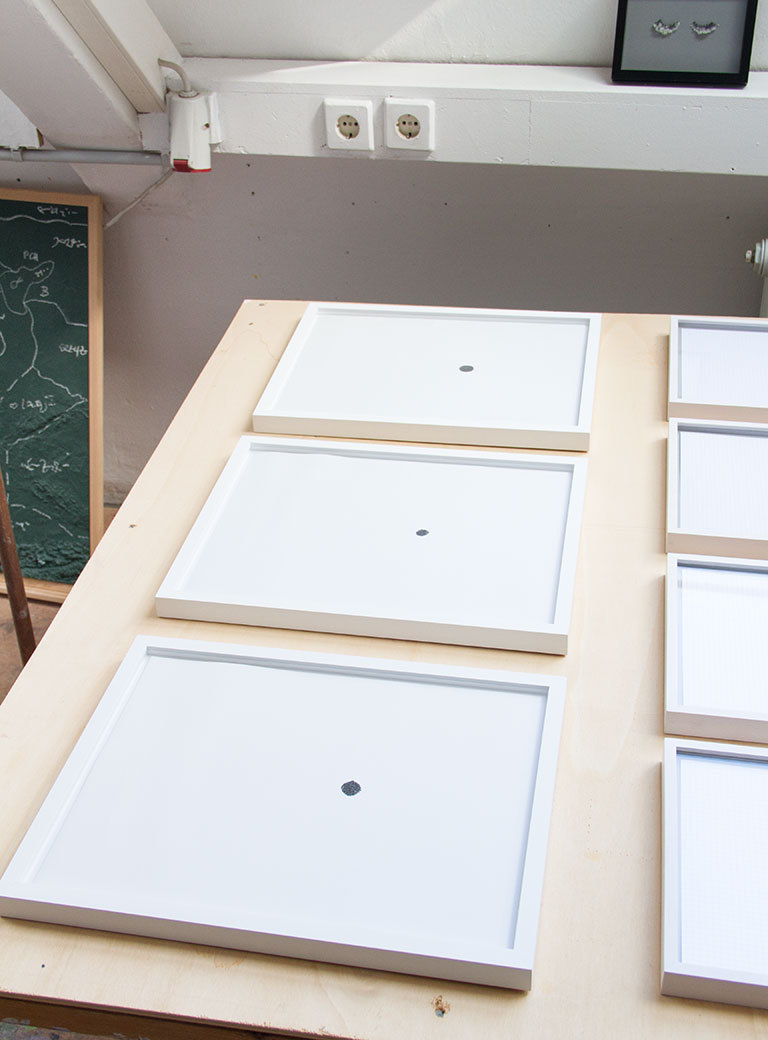
In the meantime, you are no longer at the beginning of your career and have found your own direction. How would you explain in your own words what you are doing?
I’ll try to answer this in three sentences: I am interested in physics and everyday phenomena and try to show everyday objects in such a way that they don’t look commonplace. The works function like physical arrangements. The photographs, videos, objects, and installations created in the process are of a documentary nature. I use no image processing programs or any other form of digitally generated material.
That means, you always show something that has actually occurred, even if it sometimes looks unreal or surreal?
Perhaps three sentences are not quite enough! (laughs) It is not about placing a new thing into a world that is already full of things, but rather to observe precisely and to share these observations with the help of photography, an object, or a video. But I don’t use video as a painter uses paint. In my work it is always about a construction that is documented through film and can thus be watched in a particularly precise way. That is how one manages to play a trick on the everyday, to see in such a way that it becomes hardly recognizable and to show how the mundane under our observation, is stripped of its banality in order to become a pawn in our own history: This motivation determines my way of working.
And what do you want your work to trigger in the viewer? How should it be perceived?
I would like to enter into a dialog with the viewer and to let a game with natural laws, viewing habits, and expectations emerge on the basis of physical phenomena. Ideally, I create only half of my work. When I have observed something, I think of a way to show, frame, exhibit, and to stage it. Then a viewer enters and complements it with their experience; everyone tells their own story which does not have to be compatible with mine.
My goal is, to open as many associations as possible with few means. I would like to show pictures behind that which is known, which draw the viewers deeper into their personal histories – concentrated, very quiet and light, at times with melancholy, at times with humor.
So your art has always a double bottom under which the most diverse meanings hide? Is that your claim in regard to your works?
If my work gains a philosophical meaning through the fact that you give it one, then it is actually desired. The various interpretations distinguish a good work for me. Otherwise it would be flat like a physics book. Meanwhile, I can trust my gut feeling in this regard.
One of your works, which has received a lot of media attention, investigates literary sources.
Yes, the Final Full Stops. That’s a work for which I photographed in cooperation with the StaBi (State Library of Berlin) and the Rathgen Research Laboratory the final full stops of the first editions of fifteen love novels from the last two centuries with a microscope. They were printed greatly enlarged and so one can see for example that the final full stop in Goethe’s Werther is not round. I also like the final full stop of Schnitzler’s Traumnovelle very much. It looks like a picturepuzzle.
That is an almost poetic work. Does the term “poetry” in regard to your work mean something to you?
As long as I don’t have to write it myself it is alright. If I could write, I would not have become a visual artist. (laughs) Poetry in a figurative sense is totally alright. As long as it is not the reason for a work but rather develops from it. I don’t make work to be beautiful. That would be kitsch.
But what then is the actual reason to create a work and to exhibit it?
That’s a matter of feeling. When I find something fascinating, I make a work of it. At the moment of decision I don’t know yet what the work will look like. And often it is a surprise. In the case of Final Full Stops for example I negotiated for three months with the directors of the library without realizing that in the creative process at least, the work was something that one could not see with the naked eye.
If the point of departure of your work is to go through that go through life with attentive eyes and observe, is the topic of your work then not ultimately up to chance?
Chance certainly plays a certain role in it. The emergence of my works is often connected to an anecdote. For example, I have a work with two yardsticks of different lengths. In this case I was present in the construction of a fair booth and realized that somehow nothing fitted together: Everywhere two centimeters were short between the individual wool elements. Then I found out that the measurements on the saw were different to those on the yardstick. The thought, that one cannot trust measurements did not leave me until I actually found and bought two inaccurate yardsticks. let go of me anymore until I actually found and bought inaccurate yardsticks. Both yardsticks originate from a German DIY market; I thought this totally exciting when one considers that precision is a very German trait.
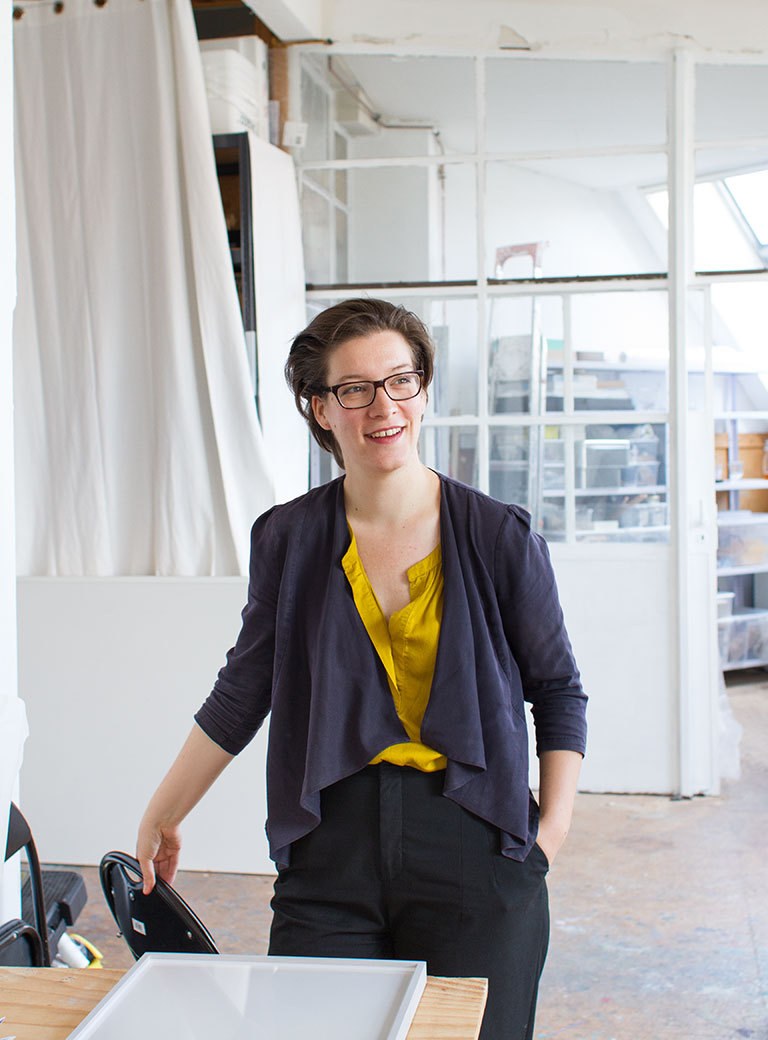
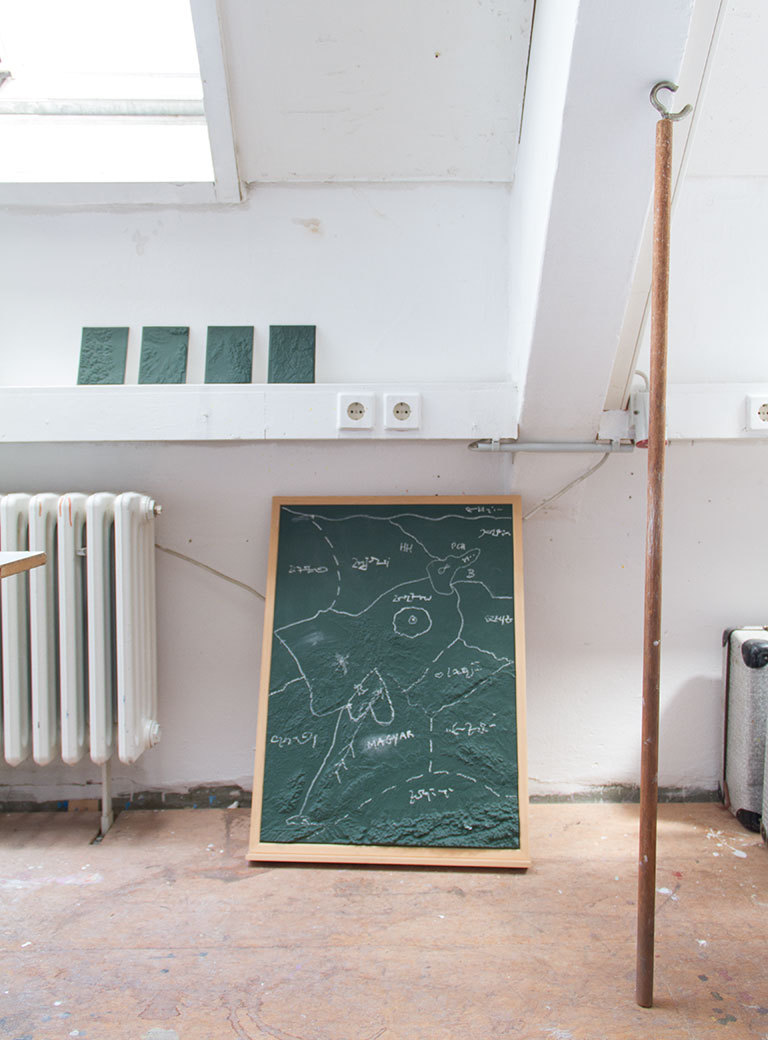
Isn’t there also an anecdote referring to your topographical models?
They actually belong in the work group in which I deal with measurements. Measurements are a matter of definition. Who says that a meter is a meter? Why does a day have twentyfour hours and not thirty? This determination has been made by someone at sometime and everyone has subsequently gone along with it. There haven’t been political debates about that. But we quarrel about borders! That is why I wanted to make a topographical tabula rasa, I bought relief maps and painted them with blackboard paint, so everyone can draw their own capitals, national borders, autobahns – their own worlds. We have learned to accept a border as a natural condition, as a social norm. But how arbitrary or relative is a border? What does a geographical border mean in times of borderless communication and cross-border trade? Borders, courses of history, official definitions of a certain topography or region delight some and make others unhappy. Borders and the evaluation of their history are not as static as it may seem. These maps are an invitation to review seemingly firm facts and to revise them, for example the idea of the national state and of the collective responsibility for social differences and environmental problems in a globalized world of open markets.
So your art has also a political dimension?
Some of my works are certainly political. But political works that have a moralistic undertone give me the creeps, I can’t deal with a didactic attitude. It is important to me to engage in single-track suggestions for improvement or critique of capitalism but leave the viewer the freedom to see in it what they want. It is beautiful to me when my works take on a political level this way.
You have lived for quite some time in Istanbul. What can you take home from this time?
Since 2012, I have lived there for a longer period. That was two years after Istanbul became the art capital of Europe and one year before the Gezi protests. I have experienced this time as unbelievably euphoric. For me, Istanbul was the most exotic city of Europe and the most European city of the Orient – a place in which very much was possible.
An exciting clash of many different influences come together in this city and at the same time, as in Rome, one feels as inconsequential as a speck of dust seeing 4,000 years of human history in a single glance. There are ancient ruins adjacent to a small design store. The electronic music too, very multi-layered, I have enjoyed this creative chaos that can perhaps be compared with the first fifteen years of Berlin after the reunification of Germany. Nobody really knows where this city is going, forces simply erupted and certain actions ensued.
At the moment, the situation in Istanbul and the entire country seems rather to have taken a turn for the worse.
The euphoria has now turned into lethargy. That even professors can no longer travel and the extent of censorship, that is very sad. Moreover a kind of auto-censorship has set in, people are very careful, very few of my friends express openly in email what they think about the situation.
It must certainly be difficult to watch such developments in a city to which one is connected.
Everything can be inspiring if one takes the trouble to look. That is especially true for Istanbul. The city is “bitchy diva” – on the one hand glitzy, beautiful, affectionate, and attractive yet at the same time, repulsively ugly, merciless, tough, and conceited. It is inspiring – when the political events don’t paralyze you. Would I go there again for half a year? One would have the Hagia Sofia to oneself … But the euphoria that I felt in 2012 has turned into a certain apathy and frustration in many of my acquaintances and this has been underscored by the latest elections. And after the so-called “coup attempt” which has lead to massive detentions and suppression of the independent press, I see in my friends, a certain faintheartedness and a retreat into privacy. The society is split more than ever before. A third of Istanbul’s galleries have closed since the Gezi protests. The Sinop Biennale was cancelled as was the Çanakkale Biennale. Also the Art International Istanbul was cancelled in 2016. These are not good times for the art scene. And nor are they for national cultural assets, which often have to serve mercantile interests against the preservation of sites of historic interest. It is very sad, as is the hubris with which many reconstruction projects and sales to pro-government large-scale investors end.
But your question deserves a positive conclusion. A Turkish proverb says, “My hope has fallen into the water, but it has not drowned, since I had taught it to swim.” Or something like that.
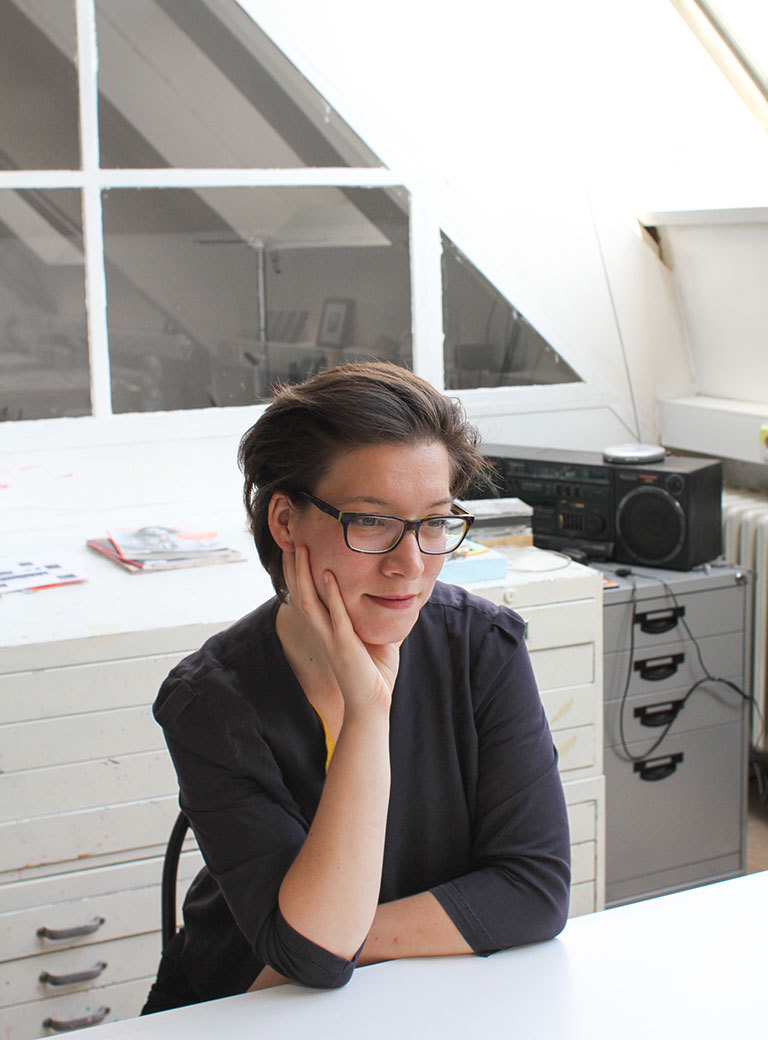
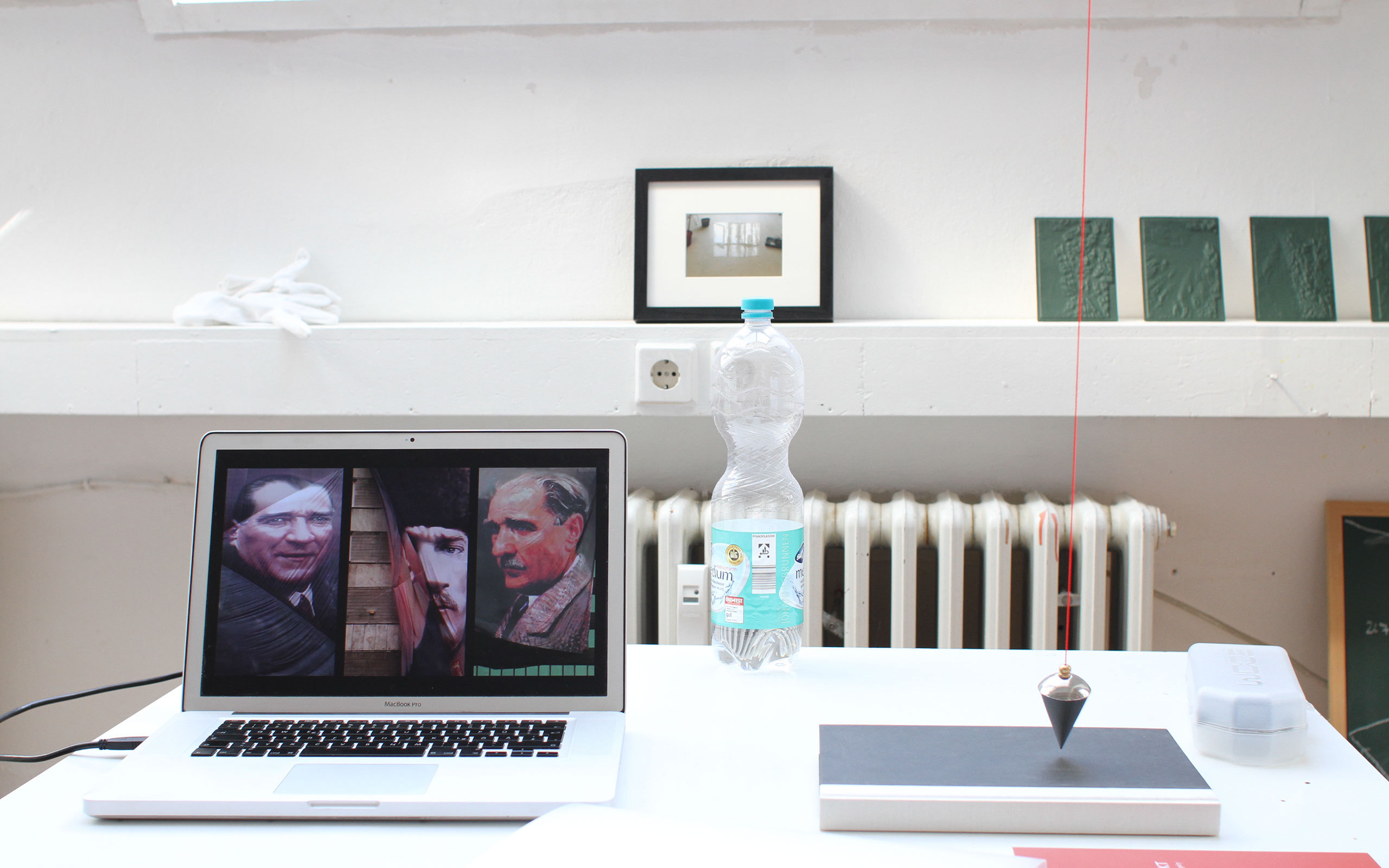
Which exciting things are happening for you this year?
My solo exhibition Gravity is Just a
